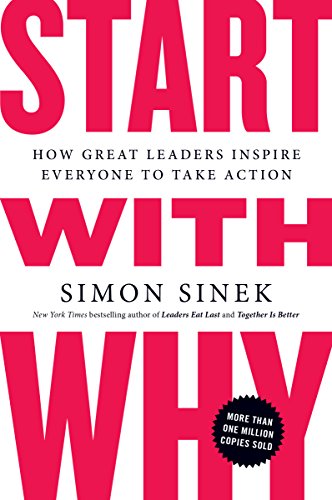

This article is an excerpt from the Shortform summary of "Start With Why" by Simon Sinek. Shortform has the world's best summaries of books you should be reading.
Like this article? Sign up for a free trial here .
All businesses need to motivate customers to do something, whether that’s buying a product or a service. Does manipulative advertising work? What are the most common strategies of manipulative advertising? If you’re a buyer, how do you spot them? If you’re a seller, should you use them?
We’ll cover the six most common manipulative advertising tactics. We’ll look at their pros and cons and discuss whether they actually work, or if there’s a more effective way to advertise.
Two Types of Advertising
There are two ways we can motivate people to act: manipulation and inspiration.
- Manipulations use outside influences to get people to buy a product or service. They use the “carrots and sticks” model of behavior reinforcement. While manipulations may produce short-term gains, they don’t create long-term loyalty.
- Inspiration causes a person to act from internal will, not from outside influence. Commonly, these people are inspired by a company’s WHY. Inspirations encourage loyalty, and loyalty leads to repeat business.
Six Common Manipulative Advertising Tactics
Here are six common manipulative advertising tactics and why they don’t work.
Manipulative Advertising Tactic #1: Price
Lower prices induce people to buy, so companies engage in price wars and sell at rock-bottom prices.
But price manipulation can be dangerous for a company. When a customer becomes used to paying a low price, it can be nearly impossible to increase the cost of an item.
This creates a market of commodities, where companies have to create more products to keep their revenue up. So while lowering prices drives business, it also makes it hard to earn a profit in the long run.
Manipulative Advertising Tactic #2: Promotions
Promotions are short-term programs (often referred to as “value added” programs) that offer a temporary incentive to make a purchase immediately. Some common promotions include limited-time sales, cash-back offers, coupons, or mail-in rebates.
We’ve all experienced promotions, and they’re a common manipulation for the car industry.
- When Japanese automakers started edging out their domestic counterparts, American car manufacturers like General Motors (GM) started massive incentive programs. But while they brought in customers and created a short-term solution, they also cut into GM’s profit.
- GM had to discontinue some of their promotional programs, which caused their sales to decline. Customers had started to expect promotional pricing, and when it disappeared, they went back to buying from foreign auto companies.
To avoid the financial penalty of promotions, companies often design rebates to be difficult to cash in on. Nearly 40% of customers never get the rebate, since they don’t follow the steps to get the refund. While this manipulation has a short-term financial advantage, it costs in long-term reputation and repeat business.
Manipulative Advertising Tactic #3: Fear
Fear is the most powerful manipulation because it taps into our survival instinct.
It’s also a common tactic: think of anti-drug advertisements or public service announcements that caution you to wear your seatbelt lest you die in an accident.
In the business world, fear is often used to convince us that if we don’t buy a particular service or product, something bad will happen to us. (Shortform example: a good example of this are pharmaceutical advertisements, where people are told that not taking a certain drug will adversely affect their longevity or quality of life.)
While often nothing bad will really happen to you if you don’t buy said product/service, fear makes customers feel like it will—which is an effective manipulation.
Manipulative Advertising Tactic #4: Aspiration
Aspiration taps into people’s desire to have more, do more, or be better. They’re most effective if the people they target are insecure or worry about achieving their goals.
Aspiration sounds a bit like inspiration, but they’re different things. For example, aspiration gets people to buy gym passes, but it takes inspiration to get a person to use them. That’s why gym memberships rise by 12 percent in January, but only a fraction of those people ever use them.
The biggest issue with aspirations as a manipulation tactic is that they create a desire for short-term satisfaction when only long-term solutions work. Aspirations might get people to act for a little while, but they fail to maintain their momentum.
Manipulative Advertising Tactic #5: Peer Pressure
When a company claims that a majority of people or experts are using their product, they’re using social pressure–also known as peer pressure–as a manipulation. That’s why advertisements often make claims like “four out of five experts agree” or that “millions of satisfied customers” believe their product is the best!
Peer pressure works because it plays into our deep-seated fear that other people might know something we don’t. In other words, by invoking the majority, peer pressure makes us worry that our decisions are wrong.
That’s why celebrity endorsements can be so effective. When a celebrity talks about a product, it makes people think the product is good, or that buying that product will make us more like the celebrity endorser. Think of examples like Michael Jordan endorsing Gatorade and Nike, or Tiger Woods endorsing everything from Titleist golf balls to GM cars.
Manipulative Advertising Tactic #6: Novelty
Novelty — defined as being “new” or “unusual” — is often marketed as “innovation.”
But novelty and innovation are very different from one another.
- Novelty is merely introducing something new and will eventually fade into the past. Novelty is more a gimmick than a real improvement.
- Innovation is change that is valuable and persists in the industry well into the future. It is real reinvention, in ways that matter to customers in the long-term.
Ultimately, novelty tricks consumers into thinking that a product or service is innovative when it’s not.
Manipulative Advertising Example
We can see the difference between novelty and innovation when we look at two “innovative” phones: the Motorola RAZR and the Apple iPhone.
- The RAZR was billed as “innovative” and future of mobile phones because it featured innovations like “aircraft-grade aluminum” and a “chemically-etched keypad.” While they sold a lot of phones initially, within four years, Motorola stock was trading at 50 percent of its former value. What was supposed to be innovation was actually novelty – it didn’t last.
- The iPhone was marketed much like the RAZR: as the future of mobile phones. But unlike the RAZR, the iPhone really was innovative, and, Sinek claims, not because of the touch screen and removing buttons. The iPhone changed how the phone industry worked by telling phone manufacturers what their phone would do (rather than phone manufacturers deciding what features they’d support). This was a lasting change that continues today.
Whenever companies introduce multiple minor variants of a product, that’s a sign that they’re just practicing novelty instead of innovation, like Colgate’s thirty-two types of toothpaste.
Why Doesn’t Manipulative Advertising Work Long Term?
Manipulative advertising is common because it works in the short term. We live in a world where we value quick results.
As a result, manipulative advertising has become pervasive. Most companies use manipulative advertising to get consumers to choose their product or service. And it goes beyond business: Manipulative advertising is commonly used in politics, too.
In the end, however, manipulative advertising only leads to short-term profits. That’s because manipulations lead to transactions, not loyalty. Just like the mallets and car doors from Chapter 1, manipulative advertising is a way companies can slap a bandage on a deeper problem. Because the results are temporary, companies have to keep using manipulations to be successful.
Why Manipulative Advertising Is Dangerous
Manipulative advertising is an excellent tactic for transactional businesses where you only do business with a customer once.
But for any businesses that want lasting relationships with repeat customers, manipulative advertising doesn’t help.
In fact, some manipulative advertising can even harm a company’s ability to weather downturns in the economy. For example, the American motor industry–which embraces manipulations–found itself struggling in the economic downturn of 2008.
- Their manipulations might have earned them cash in the short-term, but it failed to build customer loyalty. Loyal customers float business through hard times, and, without them, the American motor industry crashed.
- Thus, manipulations ended up costing the industry more money long-term than it earned in the short term.
Ultimately, manipulative advertising creates stress for buyers and for sellers.
- For buyers, manipulative advertising makes it hard to know what product to buy. They’re inundated with so many products and messages that it’s nearly impossible to cut through the noise—which in turn, stresses buyers out.
- For sellers, the stress of manipulative advertising comes from feeling pressure to stand out in such a competitive landscape. Inspiring customers and creating loyalty takes time, whereas manipulations give quick, temporary results. But as we talked about earlier, those results often come at the cost of either a) your profit margins or b) your repeat customer base. Thus, companies find themselves stressing over finding new customers, making new products, or both.
Manipulative advertising is dangerous because its short-term effectiveness has made it the norm. As a result, companies feel pressured to do what their competition is doing. In other words, if the competition is using manipulations, then it’s more likely that your company will, too.
Manipulative Advertising Example
The economic crisis of 2008 is an extreme example of the danger of manipulations.
- Banks used manipulations both internally and externally. Internally, manipulations like cash bonuses encouraged poor decision making. Externally, manipulations like aspirations led people to take on bigger loans than they could afford.
- These tactics led to short-term financial gains but long-term devastation. Manipulations led to a series of ill-informed short-term decisions, which stacked up like a house of cards. When the house of cards imploded, it took the whole American economy down with it.
What’s the alternative to manipulative advertising? Inspire your customers with your WHY.
———End of Preview———

Like what you just read? Read the rest of the world's best summary of "Start With Why" at Shortform . Learn the book's critical concepts in 20 minutes or less .
Here's what you'll find in our full Start With Why summary :
- What Steve Jobs did right compared to every other business leader
- How to define your organization's WHY
- How to help your organization avoid losing its edge as it succeeds







I don’t see you talk about manipulative advertising that targets a person’s desire to be loved or to have friendship. They act like they are in a love relationship with you or like they are your best friend.
Direct advertising by email like, “Tom, we miss you.”
Or email ads that use your name & act like it’s a dating/personals ad. For example, an email from Groupon says,
“$10 Says We’ve Been Waiting For You.
If this was a dating ad, we’d be offended.”
Or from a fruit & vegetable sales company:
“You’re the apple of our eyes, and you deserve the very best birthday! We hope you have a relaxing day, filled of yummy veggies.
We have so mushroom in our hearts for you,”
Fake love tactics .